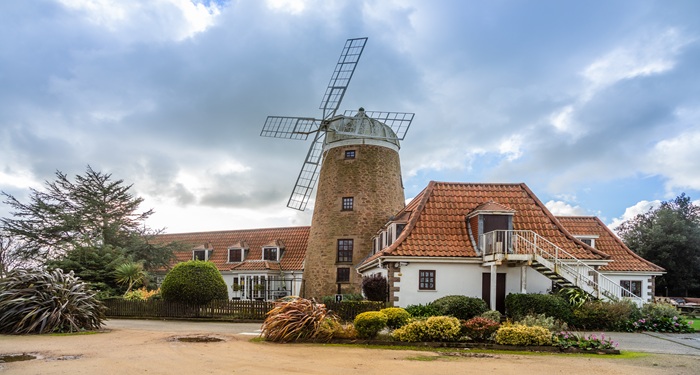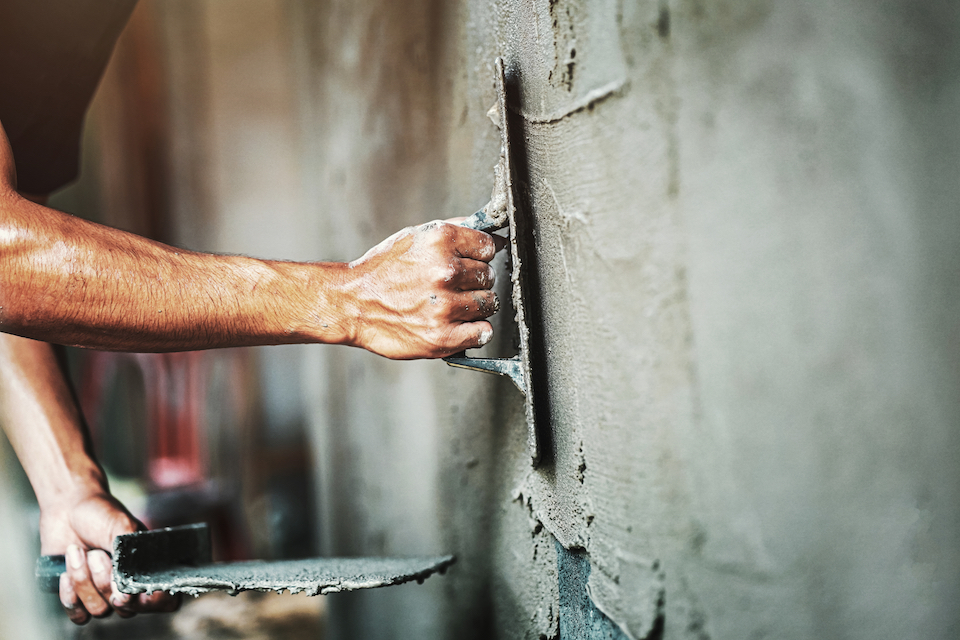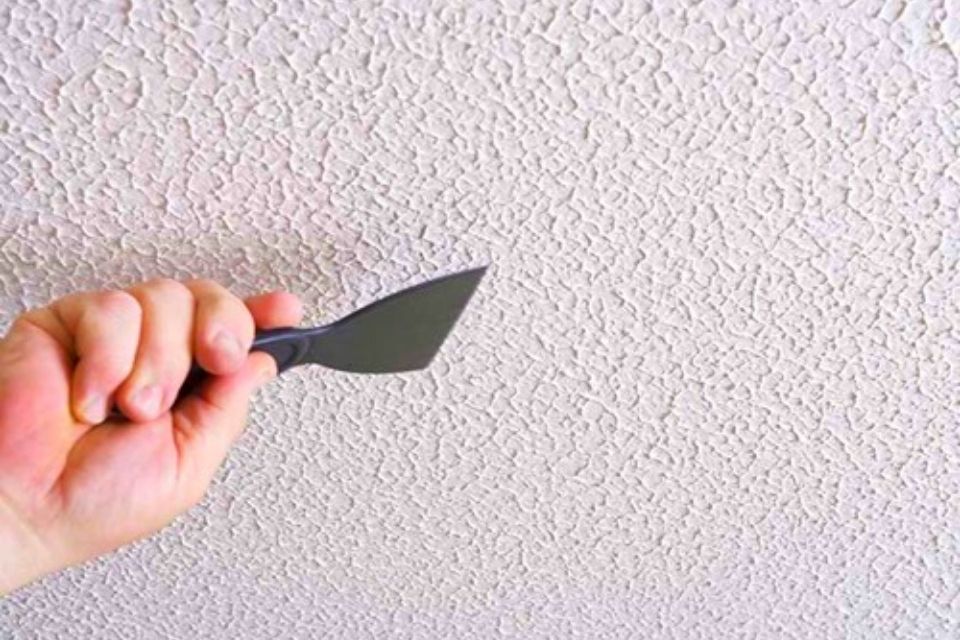What is Silicone Render?
Silicone render is a rather modern exterior wall finish, most notably designed for increased durability and water resistance to protect your home’s exterior fabric.
Technically, it is a breathable render system that prevents any moisture buildup, ultimately prolonging the lifespan of the exterior of your home. Silicone render has become very popular for both new and renovated homes, and as such, comes in a wide variety of colours and finishes.
Silicone render has self-cleaning properties, and due to this, it retains its fresh appearance over time.
Unlike traditional cement-based renders, silicone render is resistant to cracking, which makes it ideal for homeowners who are looking for an aesthetically pleasing finish that will stand the test of time.
In this guide, we’ll cover everything you need to know about the cost of silicone render, including materials, labour, additional expenses, and key factors affecting silicone rendering cost per m2.
Silicone Render Prices
| Type of Silicone Render | Supply-Only Price per m2 | Installed Price per m2 |
|---|---|---|
| Standard Silicone Render | £15 - £25 | £45 - £65 |
| Coloured Silicone Render | £20 - £30 | £50 - £80 |
| Insulated Silicone Render | £40 - £60 | £90 - £120 |
These silicone render prices can vary based on the brand, finish and labour rates in your area. Supply-only prices refer to the materials purchased directly from suppliers, while installed prices include the cost of labour.
- What is Silicone Render?
- Average Costs by Property Size
- What are the Supply Costs for Silicone Render?
- What are the Additional Costs of Applying Silicone Render?
- Factors Affecting Silicone Render Costs
- Tradesperson Costs for Applying Silicone Render
- How Long Does It Take to Apply Silicone Render?
- Types of Silicone Render
- Comparison with Alternative Finishes
- Building Regulations and Planning Permission
- Application Process Overview
- How Much Does It Cost to Remove Silicone Render?
- FAQs
Average Costs by Property Size
Ultimately, the total cost of a silicone render project can vary quite significantly depending on the size and how complex the structure is. For example, a mid-terraced home will typically require anywhere from 60 to 80 square metres of render, which would cost between £3,000 and £5,200.
For semi-detached homes, you would be looking at an area of 100 to 120 square metres, so you can expect the cost to rise to around £4,500 - £7,800. Detached properties are the most expensive to render due to their larger surface area, usually needing 150 to 200 square metres of coverage, at a cost of £6,800 - £12,000.
These costs include labour and materials and can increase if the surface needs extensive preparation, or if access is difficult and scaffolding is required.
What are the Supply Costs for Silicone Render?
Let’s first look at the supply, or materials only, cost of a silicone render project. When buying silicone render directly from a hardware store, the prices will range quite greatly from about £15 to as much as £60 per m2.
Standard silicone is the most affordable option, and the price starts to increase as you begin to look at coloured and insulated render systems.
As with many things, the brand of the silicone render you purchase will have a big impact on the price, with household brand names attracting higher prices.
The colour of the render, the grain or texture size, and additives that improve flexibility or waterproofing also affect the price. For insulated render systems, the cost includes insulation boards, which dramatically increase the material price.
What are the Additional Costs of Applying Silicone Render?
With most construction or renovation projects on the home, there are some additional expenses that crop up throughout the job. One of the most common additional costs for silicone renders is scaffolding hire.
If your property has multiple storeys, the job will be completed much quicker and to a higher standard with scaffolding in place over the use of a ladder. Scaffolding will add around £600 - £1,000 to the total project cost, and you can find more information about it here.
Another key factor and expense is waste disposal. If your home has existing render, this will need to be removed, and there will be the usual debris and packaging from the work itself.
The best solution here is to hire a suitably sized skip. Skips start at around £200, and rise based on size, location and the duration of time you will require it. Learn more about skip hire and the average pricing here.
Preparing your walls to be rendered to ensure a top-quality finish is essential, and this may involve some deep cleaning, repairing of cracks or damaged masonry, and the removal of any loose materials. Preparation costs can vary significantly based on the condition of the walls, but typically range from £200 to £1,000.
Although silicone render is usually self-finished, some homeowners may opt for a final sealing or protective coating. This optional step can enhance durability or achieve a specific aesthetic and usually costs £5 - £10 per m2.
Factors Affecting Silicone Render Costs
There are several factors that can impact the total cost of silicone rendering, and some we have already mentioned in this guide. First and foremost, the size and shape of your property will play a major role in the cost of the project.
Large homes that feature complex and unusual architecture will take far longer to render than those homes that are smaller and are more standard in shape. The condition of the existing wall surface is another key factor. Damaged or uneven walls will need more preparation, increasing labour time and cost.

As was mentioned earlier in relation to scaffolding, accessibility is incredibly important and will impact the cost of the project. Homes that have difficult-to-reach areas or those that are incredibly tall may require more specialist equipment, and of course, scaffolding.
You should also consider the cost of trades in your area. In the South East and London, the rates for tradespeople are higher than those in the North, mainly due to the increased population, and therefore demand, and also the higher cost of living in those areas.
Finally, the complexity of the desired finish, such as using multiple colours or applying a textured surface, can raise both material and labour costs.
Tradesperson Costs for Applying Silicone Render
Having covered the supply only costs and the likely additional costs of the silicone render project, let us now look at the cost of tradespeople and labour. The cost to hire a tradesperson to complete silicone rendering on your home will most likely be calculated in one of two ways - either it will be priced per day, or per square metre.
If you are charged per square metre, you will pay around £30 - £60 per m2 - the exact price will depend on the type of render and the complexity of your home. Alternatively, tradespeople may charge a daily rate, which generally falls between £180 and £250 per day.
Bear in mind that some specialist renderers and installers of external wall insulation will usually charge more than your average builder. However, this additional expertise will guarantee a very high-quality result. Labour costs often include wall preparation, application of basecoats and mesh, primer, and the final topcoat.
How Long Does It Take to Apply Silicone Render?
The duration of a silicone render project depends on several factors such as the type of render being applied and the size of the property. Not to mention, any adverse weather will put a halt to any work.
As an example, a mid-terraced house will take around four to six days to render, while a semi-detached house will take more like six to eight days. Detached homes vary quite widely in size, so you can expect this to take at least ten days, but you should have a specialist review your home to give you a more accurate timeline.
| Property Type | Duration (Estimated) |
|---|---|
| Mid-Terraced House | 4 - 6 days |
| Semi-Detached House | 6 - 8 days |
| Detached House | 10 - 14 days |
Types of Silicone Render
We’ve mentioned throughout this guide that there are different types of silicone render that each have different features and drawbacks. Let’s take a closer look at each:
Standard silicone render is a very basic product that offers great water resistance and breathability. It is the most commonly used product on residential properties and offers a very fresh and modern look. It is durable and resistant to cracking, but it doesn’t feature any insulation benefits.
Coloured silicone contains certain pigments that colour the entire material, thus removing the need to paint it. This type of render is UV-resistant and retains its clean appearance over time.
The only drawback here is the added expense, as this is on the more expensive end of the scale. For those looking to boost their home’s thermal performance along with rendering their home, insulated render systems are the top solution.
This setup significantly improves the energy efficiency of a home and can help reduce heating bills. However, it increases the overall cost and the thickness of the wall build-up. Again, however, this is one of the most costly options for silicone rendering.
Thin-coat silicone render systems are lightweight and quick to apply, making them ideal for new builds or refurbished properties with flat, even walls. While they offer a sleek appearance and quicker installation times, they require excellent wall preparation to ensure a smooth finish.
Comparison with Alternative Finishes
When you compare silicone rendering to other external finishes, the most standout feature is its high durability, coupled with its low maintenance. A more affordable option is cement rendering, but this cracks easily over time and requires a lot of painting throughout the years. Acrylic rendering offers a very bright and glossy finish, but is not very breathable, especially compared to silicone.
Monocouche render is a through-coloured alternative that’s quick to apply in one coat, but it may not perform as well in damp conditions. Lastly, exterior painting is the cheapest option, but it requires the most maintenance.
| Finish Type | Durability | Cost | Maintenance | Appearance |
|---|---|---|---|---|
| Silicone Render | High | High | Low | Modern |
| Cement Render | Medium | Medium | High | Traditional |
| Acrylic Render | Medium | Medium | Medium | Glossy |
| Monocouche Render | High | High | Low | Textured |
| Exterior Paint | Low | Low | High | Variable |
| Cladding | High | High | Low | Modern |
Building Regulations and Planning Permission
In the majority of cases, silicone rendering projects will not require planning permission, as they fall under permitted development rights.
However, if you live in a listed or a protected building, or your home is within a conservation area, you will need to run any home improvement work by your local council to ensure that you are permitted to have it completed.
Additionally, Building Regulations must be followed when rendering, as they generally affect a building’s insulation or structure. These regulations cover areas such as thermal performance, especially when installing insulated render systems, as well as fire safety and structural integrity.
Application Process Overview
What does a typical silicone rendering look like? Well, first, the wall surface will be prepared - this includes any repair or cleaning work to ensure there is a smooth and solid base to work on.
Once this has been completed, a basecoat will be applied, along with the addition of some reinforcing mesh to enhance the durability and prevent cracking.
From here, a primer coat will be applied to make sure there is proper adhesion for the final layer. Finally, the silicone render topcoat will be applied, usually this will be done by hand or with a machine, depending on the system being used. This final layer is typically coloured and provides the weather-resistant and breathable finish that silicone render is known for.
How Much Does It Cost to Remove Silicone Render?
If you have old silicone render that you want removed, the cost of this is around £20 - £40 per m2, as well as waste disposal, which may cost an additional £200 - £300.
After removal, the wall may need to be repaired or re-rendered, adding another £200 - £500 or more to the total cost.
FAQs
Q: What is silicone render made from?
A: Silicone render is a polymer-modified render that includes silicone additives. It is these additives that bring some of the best features out of silicone rendering, such as water resistance and flexibility, which makes it more durable than other traditional render systems.
Q: How long does silicone render last?
A: Providing that the render is properly looked after and installed properly, you should get 20 to 30 years of it looking its best and performing to a top standard.
Q: Is silicone render better than traditional render?
A: Due to its increased breathability, flexibility and durability, you can certainly argue that silicone render is the superior option when compared to traditional methods and materials.
Q: Can silicone render be applied over old render?
A: Yes, it can be applied over existing render as long as the surface is stable, clean, and adequately prepared.
Q: Does silicone render improve insulation?
A: Silicone render by itself does not improve insulation, but when used as part of an insulated render system, it can significantly enhance a property’s thermal performance.




